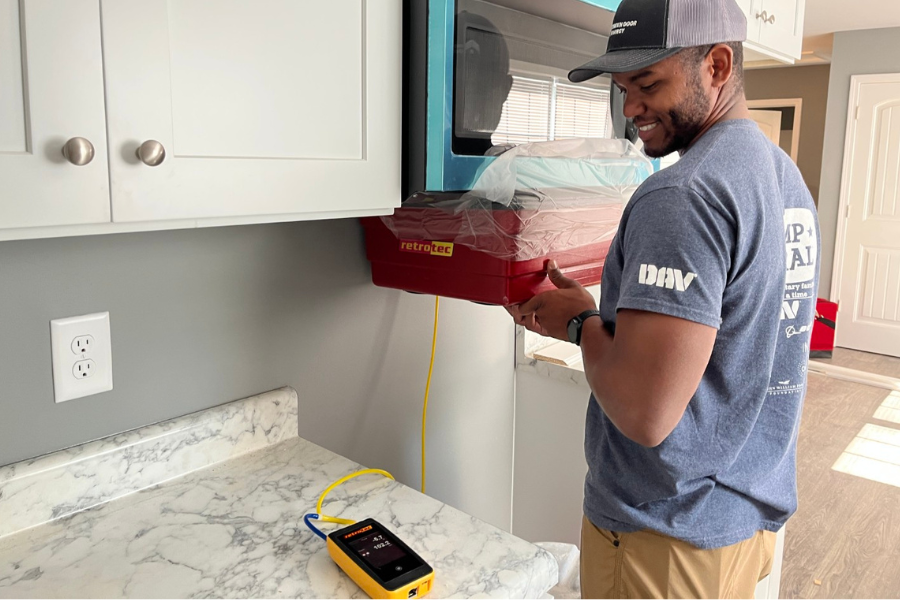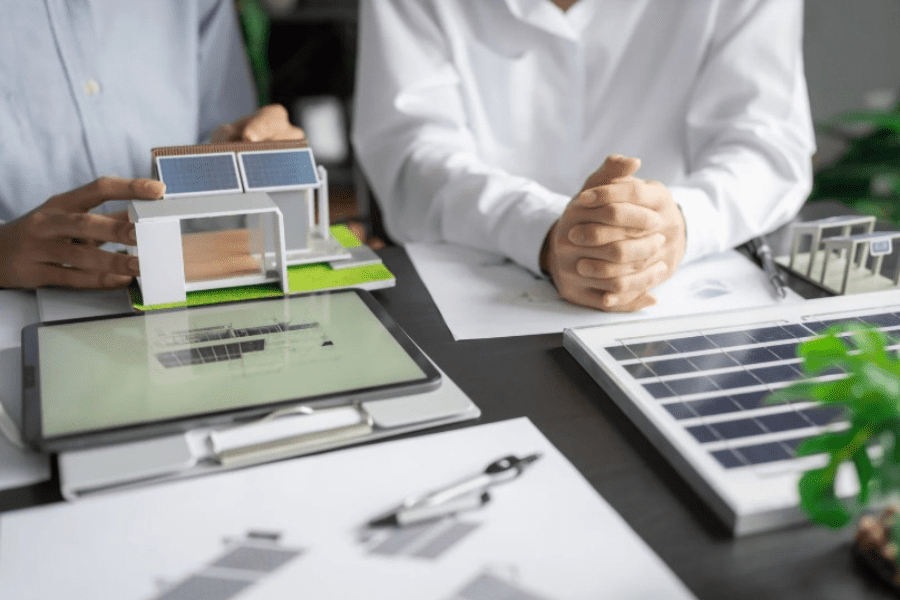Apr 10, 2024
Does it Translate to the Kitchen Table?
The IRA rebates are top of mind for the home performance industry. In a NHPC workshop, contractors spoke about how they can make these rebates work for their business and for homeowners at the kitchen table.
By: Macie Melendez
The harsh reality is this: federal money is only as good as its program. In late 2022, President Biden signed the Inflation Reduction Act (IRA) into law. With it came $8.8 billion in rebates and incentives for home efficiency upgrades.
BPA contractors joined dozens of lobby days in the lead-up to the IRA passage in support of rebates and incentives, so it only makes sense that they also be involved in what happens next. Earlier this week at the 38th annual National Home Performance Conference & Trade Show, Kara Saul Rinaldi, BPA’s Chief Policy Officer and CEO of AnnDyl Policy Group and Skip Wiltshire-Gordon, Senior Manager of Government Affairs for the AnnDyl Policy Group held a contractor workshop titled Making Incentives Work at Time of Sale.

In the 2-hour workshop, they provided information and answered questions, but it primarily focused on gaining insight from contractors on what incentive measures work at the kitchen table when helping homeowners make decisions about system and envelope upgrades.
The session room was set up with a circle of chairs in the front of the room, specifically for contractors, and several rows of chairs behind that, for everyone else. The idea was that the contractors could provide feedback and answer questions that pertain to the broader group, such as program administrators and other related organizations.
When asked if they were excited about these rebates, the group of contractors replied with a resounding yes. But there were a lot of other questions that needed answers. How will small companies be able to put out up front money for several clients at once? Will there be financing available? Will you be able to stack incentives with current weatherization programs? Is there any software available to help homeowners understand how to get the most money back? Should insulation and air sealing be required prior to efficiency upgrades? How much time will it take contractors to fill out reports required for these rebates?
All of these questions are valid because, when it comes down to it, the contractors are the ones sitting across the kitchen table from homeowners who likely don’t have heat or cooling and they need it—and they probably have a million other things going on at the same time.
Undoubtedly the goal is to get homeowners the most money possible while keeping it simple to understand.
With that goal in mind, Saul Rinaldi got feedback from contractors; here’s a recap of some of their responses.
Will there be financing available?
This was a big question that contractors had—especially those who worked for smaller companies. Saul Rinaldi explained that there is talks of “aggregators” that will be able to fund projects for contractors. In this aggregation model, a company (the aggregator) would provide funding to the contractor upfront. This would allow them to get paid to do the work in a home. Then, they can give the homeowner their rebate during the work, and the aggregator would be the one getting paid on the back end, in the long-term, when the rebate money is received. In this model, which is currently working for certain programs in California, the contractor and customer get paid right away, eliminating the concern many contractors had they they’d be paying the bills upfront and waiting weeks for rebates to get into their accounts. While most agreed that was fine for a few customers, they found it daunting to think of it when scaled larger (funding, for example, 30 houses/projects at once without rebate money on the front end).
Will you be able to stack incentives with current weatherization programs?
The answer to this question was “yes.” But it’s going to require a little bit of work to figure out the best way for homeowners to get the best bang for their buck. For example, for those homeowners who qualify for weatherization upgrades, they should do that first since it’s free. This way, the insulation and air sealing are paid for through Weatherization Assistance Programs (WAP) money, and then other upgrades, such as a heat pump, can be paid for through rebates.
Is there any software available to help homeowners understand how to get the most money back?
Contractors expressed concern that the rebate process could be confusing, both to them and to the homeowners. Saul Rinaldi said that there are software tools currently being developed to ease that very concern. Ideally, a software that contractors could bring with them on a mobile device that would allow the homeowners to enter their needs and information, and then the software could calculate the best possible outcome. Again, the goal is to get homeowners the most rebates possible and get the best energy efficiency outcome possible.

Should insulation and air sealing be required prior to efficiency upgrades?
Saul Rinaldi asked this question of the contractor group, and it was mostly met with a “yes.” Of course, we know that efficiency measures are much more effective if a home is air sealed and insulated first. There were some hesitations, however, on homes where it may not make sense (those that need an extravagant amount of work done or those that are brand new and therefore already insulated).
How much time will it take contractors to fill out reports required for these rebates?
One item that’s important to note for these rebates is that additional forms and possibly new ways of invoicing may be required. These rebates will require that contractors break out things like labor and materials on invoices so that rebate money can be properly doled out. Saul Rinaldi asked the contractor group if there was any amount of time that would “scare them away” from using these rebates. The example was this: If a new report or audit took them 3 hours in order to meet the rebate requirements, would they still do it? Every single one said yes. They said that their current paperwork takes a while anyway, so it’s already a factor in how they do business.
All in all, the session was very productive and probably could have lasted 2 hours longer. The answers to these questions will be what shape the federal requirements and, eventually, state-run rebate rollouts, so they’re important to answer now in these beginning phases. The input from this session, and other contractor roundtables, will be shared with the Department of Energy and state energy offices as funding and programs are rolled out.
We have several IRA resources available on our website here, and we will keep you informed as more information becomes available.






